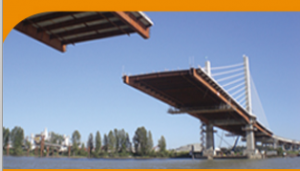
Image from Bridging the Gap – annual Construction Safety Conference in BC Canada
“Onboarding” is a term used in HR that refers to welcoming a new staff member and making them feel like part of a team. But too often, something goes wrong during new staff orientation.
Jeff Lyth told me about this term. He’s a workplace safety and human resources consultant who will speak at Bridging the Gap, the annual construction safety conference, on Nov. 14 and 15 in Richmond, BC. He’s talking about due diligence, supervision, and employers’ responsibility for safety – and he described what a new worker orientation might look like.
“It’s coming in, sitting down, watching a video, and then checking a box to acknowledge you know you’ve got to wear your hat, you know you’ve got to use fall protection, you know if you’re caught without your safety glasses, you get ‘verbal, written, gone,'” Jeff says. “A worker checks this, acknowledges this, and signs at the bottom, and that’s creating due diligence. But it also says, subtly, to the worker: ‘Okay, now we’ve got this piece of paper. If WorkSafeBC comes on site and sees you without your hat and glasses, we’re going to wave this paper, and it’s going to be on you.’ And that’s a weird stand to take on somebody’s first day.”
Of course due diligence includes the employer’s need for “legal defence” to document in case of accident. But workers need more from employers.
“The pursuit of due diligence often comes off to the worker as defending the company’s butt and that’s off-putting because they want to be cared for,” Jeff said. “They want their safety taken care of and they want to be well led.”
People work better when they feel cared for. Using an “onboarding” approach – as opposed to “basic orientation” – is just one example of how employers can achieve due diligence the “right” way.
“Make more of a point to actually welcome somebody to your organization on that first day and explain the big picture about who you are and what you value. It’s supposed to be an important first gesture between employee and organization,” Jeff said. “Otherwise, they run the risk of that orientation being very quite adversarial in a way. The employee is left with a feeling of ‘I’ve got to look out for myself around here.’”
Hear Jeff speak more on this topic and more at Bridging the Gap, where other topics of the two-day conference will include occupational disease prevention (asbestos and silica), alternatives to ladders, MSI prevention and return to work, traffic control, mobile equipment, and more.


